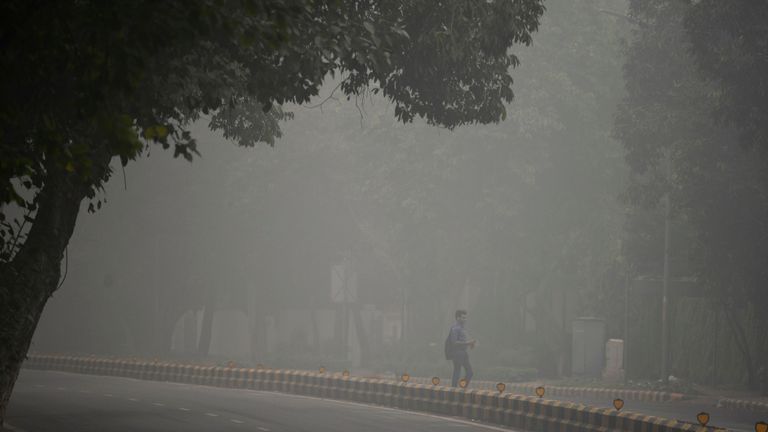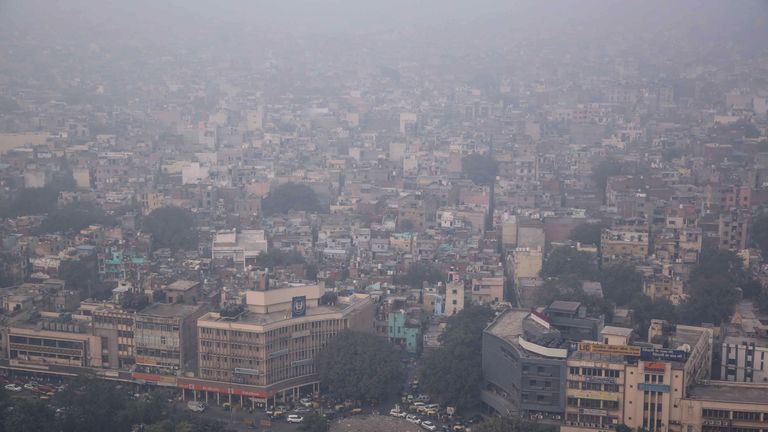The air quality index in the world’s most polluted city has registered a score of more than 900 – far beyond the score of 500, which qualifies as “severe-plus”.
In comparison, the air quality level in London on Sunday topped out at about 50, which is classed as moderate.
Levels above 400 on the air quality index puts people with breathing problems at risk of illness, and can even severely affect those with healthy lungs.
Smog in New Delhi is so bad, and visibility so low, that flights to the city of 40 million people had to be diverted away from the airport – amid fears there could be an accident.
New Delhi’s roads were empty as people chose to stay indoors rather than expose themselves to the harmful gases in the atmosphere.
The city’s chief minister, Arvind Kejriwal, said on Twitter that pollution has reached “unbearable” levels across north India, and that his government taken steps to try and help.
Mr Kejriwal added that people in Delhi were suffering through no fault of their own.
India’s System of Air Quality and Weather Forecasting and Research (SAFAR), said that the next few days will remain the same – bringing little relief to the city – adding that humidity from overnight rainfall had exacerbated pollution caused by farmers burning their crops.
:: A New Climate is a series of special podcasts from the Sky News Daily. Listen on Apple Podcasts, Google Podcasts, Spotify, Spreaker
Mahesh Palawat from Skymet, a forecasting agency in India, said: “Wind speed is picking up and it could take 24 to 48 hours before the pollution level reduces to a level of around 500.”
On Friday, the government in New Delhi closed down schools and stopped all construction activity as part of a declaration of a public health emergency, and on Monday private vehicles will be restricted in the city, based on the numbers on registration plates.
However, Mr Palawat says that the measures may not be enough, saying: “The temporary restrictions on private vehicles will have a negligible impact as we face the most hazardous situation.”
Local officials from neighbouring states are urging the central government to take tougher action on farmers who stubble-burn their crops.
Stubble-burning is the practice of destroying the leftover crops after a harvest to clear the ground, but it is blamed for the high levels of pollution in New Delhi.
According to SAFAR, satellite images had captured more than 3,000 instances of stubble-burning around the area of New Delhi, which it says contributes to 44% of the pollution.




